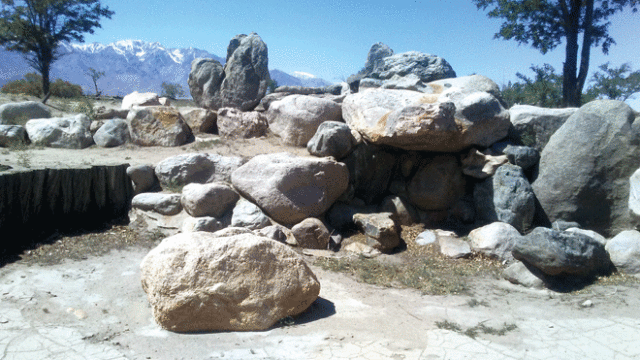By Koichi Kobayashi For The North American Post
Some of the most significant collections of Japanese gardens in North America, the gardens at Manzanar National Historic Site are important symbols of how the World War II Japanese American internees modified and improved their prison surroundings.
Manzanar’s Japanese gardens incorporate stylistic concepts and design elements developed over hundreds of years of garden-building traditions that reflect Japanese history, culture, worldviews, religion and aesthetics. The gardens are character-defining elements of Manzanar’s cultural landscape. In addition, they are important in their own right, meeting all criteria required for inclusion in the National Register of Historic Places and many of the criteria for National Historic Landmarks.
In Manzanar’s General Management Plan and subsequent planning documents, the restoration and rehabilitation of the gardens were identified as priorities. This Garden Management Plan lists specific treatments to meet the goals set forth in the General Management Plan. Implementing the Garden Management Plan will provide the public with the opportunity to see the full range of garden types once maintained at Manzanar.
All work will comply with the Secretary of the Interior’s Standards and Guidelines for the Treatment of Historic Properties. To meet the Historic Site’s sustainability objectives, newly planted vegetation will be drought-resistant and non-invasive, and any irrigation and water features installed will utilize water-saving techniques. Gardens will have barrier-free paths and the potential for different forms of interpretive media.
Management Summary
Three gardens located along the driving tour road will be planted with vegetation and associated water features will be recreated:
• Block 33 Arai Fish Pond.
• Block 34 Mess Hall Garden (Sanshi-en).
• Merritt Park.
These gardens represent a family barracks garden, a mess hall garden and the most well-known community park at Manzanar. Because of their proximity to each other and the tour road they could easily be accessed on a single walking tour. Water can be brought to these three gardens relatively easily as well thanks to a nearby well and orchard irrigation pipeline. In the administration area, two gardens will be restored and maintained in their original historic condition to show the differences between the gardens internees built for the Caucasian staff versus those built for themselves:
• Entrance Garden.
• Administration Circle Garden.
These are dry gardens with rocks, Joshua trees and cacti. Although they may require occasional hand-watering and periodic plant replacement, no irrigation system is needed. Manzanar was the only relocation center with an orphanage, so the Children’s Village and the adjacent Cherry Park will be partially restored as particularly poignant symbols of the internment. Archeological excavation will be necessary to further identify and document features that need to be restored.






